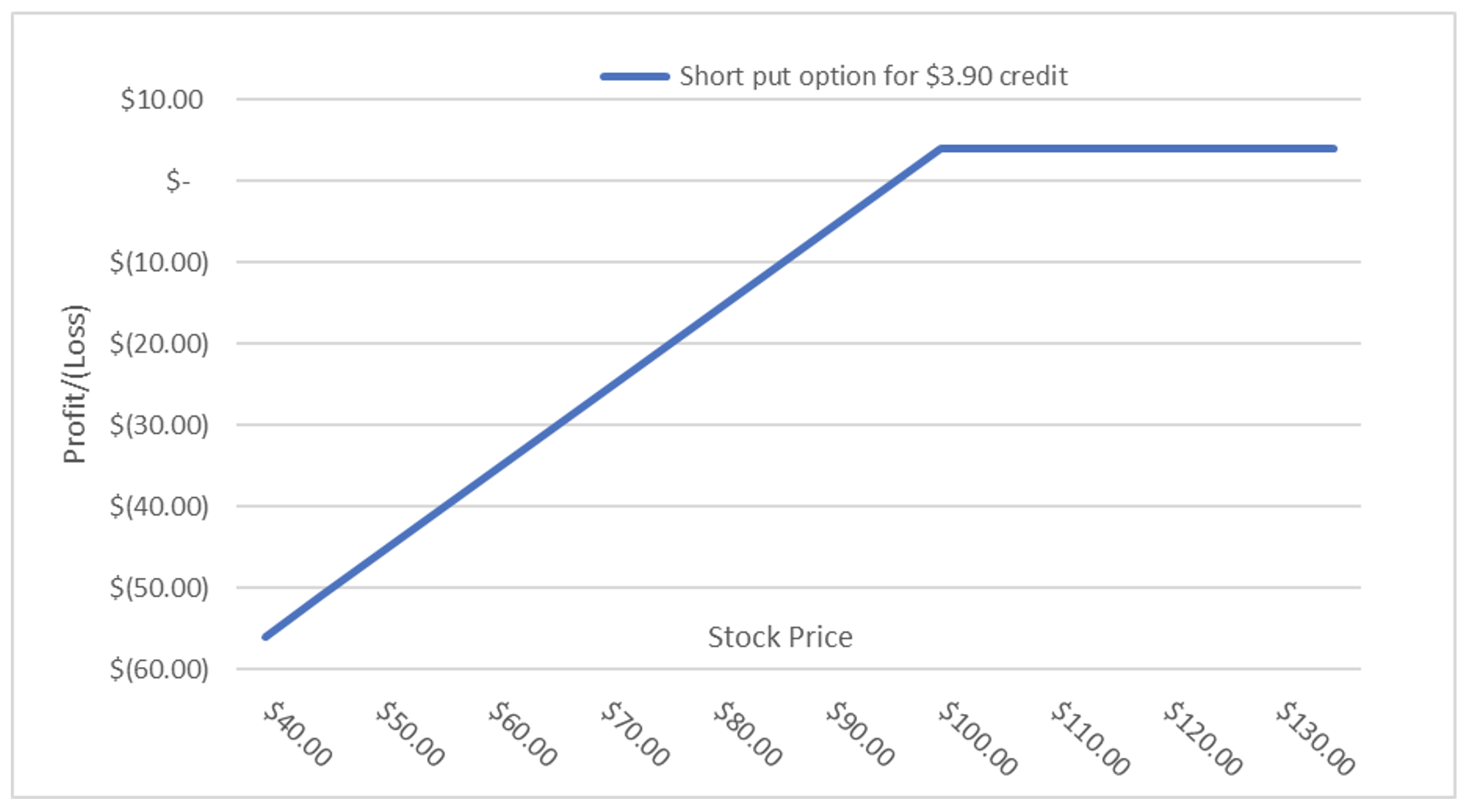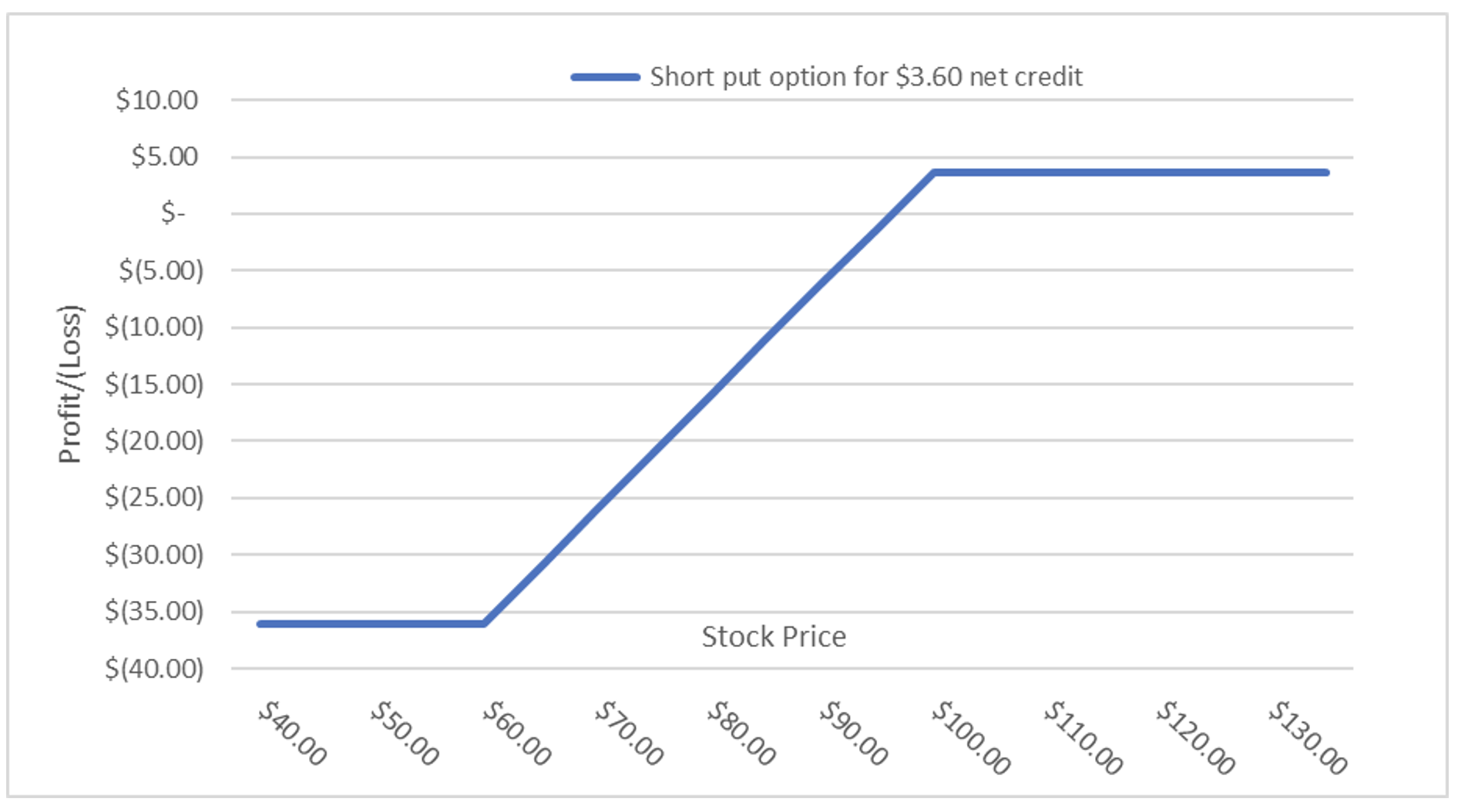Want to earn income while you wait to buy a stock? Cash-secured puts are the way to go. Look at these sweet trades that came out of CoPilot by TradeSmith:

Source: TradeSmith Finance
But what if you only have $7,500 in your account? You could take the Twitter (TWTR) trade, but not the one in Block (SQ). Cash-secured puts require you to set aside enough cash to purchase 100 shares of the stock at the strike price.
Does that mean if you want to buy fewer shares you can’t use cash-secured puts? Not necessarily. Any trader can reduce the amount of cash they need to set aside by purchasing another put option with a strike price below the one they sold. With Block, I could sell the $100 put as shown above and then buy the $60 put for $0.23 per stock share, or $23. That would reduce my max profit potential from $390 to $367. However, I would only need to set aside $3,633.
Not only does this free up more cash, but it also improves my return on investment (ROI). However, to execute this strategy correctly, there are some pitfalls you need to watch for.
Cash-Secured Puts versus Wide Spreads
Let’s do a quick refresher to get us all on the same page. Cash-secured puts involve the sale of a put option, which gives the person you sell the option to the right to sell (put) shares to you at a given strike price until expiration.
To obtain this right, the buyer will pay a premium, which you collect as a credit. With a cash-secured put, as long as the stock stays above the current strike price, the owner of the put option doesn’t have an incentive to exercise the contract. However, if the stock drops below the strike price, the owner of the put option can exercise the contract and force you to buy 100 shares of stock at the strike price.
That’s why a cash-secured put requires you to set aside enough cash in case this happens. However, we can also buy another put option to cap our downside risk. Let’s use the Block example from earlier. If I sold one put contract with a strike price of $100 for the May 20 expiration, I would collect a $3.90 credit. That means I need to set aside enough money to buy 100 shares of stock at $100 minus the credit I received.
100 x ($100 - $3.90) = 100 x $96.10 = $9,610 cash required
Here’s what the payoff graph looks like:

Source: TradeSmith
The blue line represents my profit or loss based on the stock’s price at expiration, which is listed across the bottom. For this setup:
- My breakeven price is $96.10.
- My maximum potential profit is the $3.90 credit I received to initiate the trade.
- My maximum loss of $9,610 would occur if the stock went to $0.
Now, we can take this trade and buy another put option somewhere between $100 and $0 to cap the potential losses, turning this into a vertical spread trade. Going back to our example earlier, I could buy the $60 strike price put for $0.23, leaving me with a net credit of $3.67. Buying that put cuts off any additional losses below $60. The payoff graph looks like this.

Source: TradeSmith
With the blue line representing my profit or loss on the trade, you can see that my losses are now capped at the $60 stock price. For this setup:
- My breakeven price is $96.33.
- My maximum potential profit is the $3.67 credit I received to initiate the trade.
- My maximum loss of $3,610 would occur if the stock was at or below $60 by expiration.
We calculate my maximum loss as the distance between the two strike prices minus the credit I received to initiate the trade.
Max loss = ($100 - $60) - $3.67 = $40 - $3.67 = $36.33 x 100 shares = $3,633
Here’s the cool part. My initial return on investment (ROI) was:
ROI = ($3.90 credit x 100 shares) / ($10,000 of cash I set aside) = 3.9%
Note: Even though I may only need to set aside $9,610 in cash, we calculated the ROI based on the cash needed to initiate the trade, which excludes the credit. You could calculate the ROI based on the $9,610 as well. Both are correct. You just need to be consistent.
My new ROI is:
ROI = ($3.67 credit x 100 shares) / (($100 - $60) x 100 shares) = 9.2%
Strategy Risks
A cash-secured put requires a trader to set aside enough cash so that if the contract is exercised, they can buy 100 shares of the stock at the strike price. Turning this trade into a spread does reduce the amount of cash you need to set aside. However, you can still be assigned 100 shares of stock at the strike price of the put that you sold. Using the Block example, let’s say that the stock closes at $90 at expiration.
That’s $10 below the $100 strike price, and it would lead to the contract being exercised and me being assigned 100 shares of Block stock at $100. With only $7,500 in my account, I can’t cover that. So my only option is to close out the trade at a loss. At $90, my total loss would be:
Total Loss = ($100 - [$90 + $3.67]) x 100 shares = $633
That’s a lot of money to lose on a $7,500 account. Now imagine the stock closed at $65 at expiration. My loss would be $3,133; almost half of my account! Remember, traders often use cash-secured puts on stocks they wouldn’t mind buying. And they would need to buy in increments of 100 shares.
That’s why you need to be careful when you use a spread to reduce your buying power, and you need to understand the potential losses associated with the trade. One way to reduce the risk of assignment is to go further out of the money with the put strike that you sell. While that may pay less, you run less risk of assignment. And the good news is that the far out-of-the-money put option will still cost the same.
The views and opinions expressed herein are the views and opinions of the author and do not necessarily reflect those of Nasdaq, Inc.
